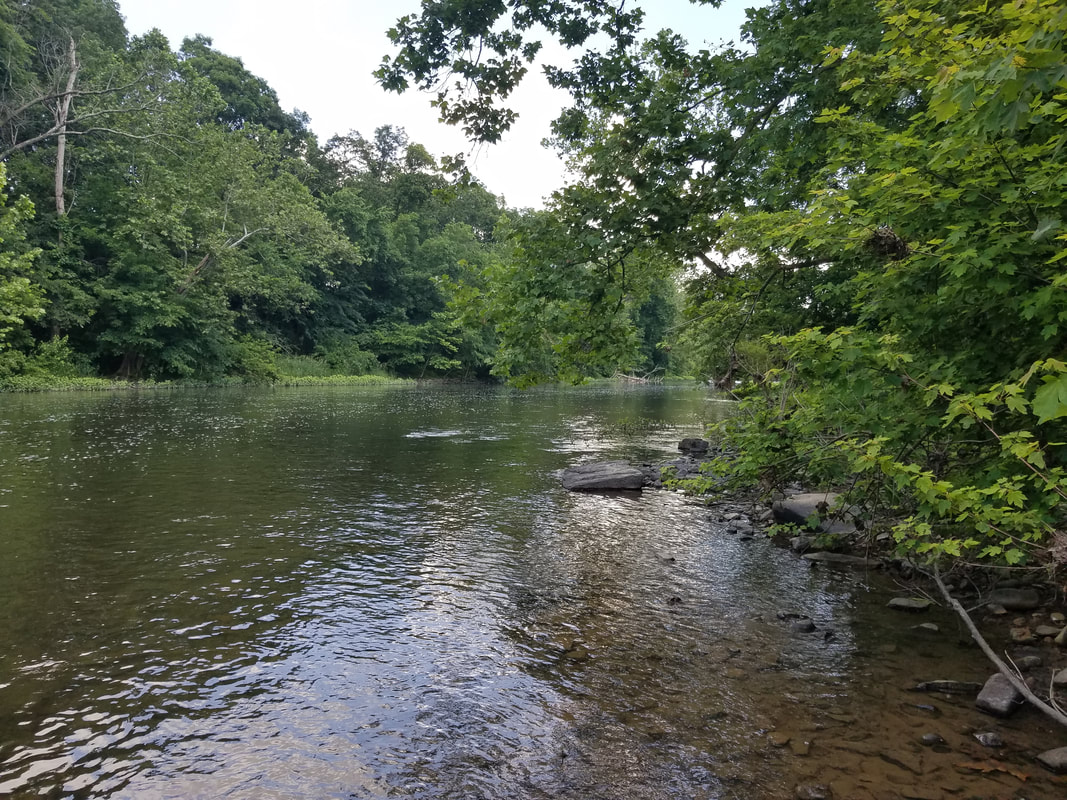|
A quick blur of brown and white. A splash. Suddenly, a tiny whitetail fawn waded in front of my son and I as we paddled east along the Penns Creek just outside of the town of New Berlin. We unexpectedly disturbed the fawn from its hiding place in a small island-like clump of weeds and down limbs, and it instinctively crossed the creek in search of its mother. The sighting provided the first glimpse of what would be numerous wildlife species we encountered on our three-plus-hour kayaking excursion down the Penns Creek last week toward the Kratzerville bridge. A bald eagle soared overhead in a particularly rustic section just east of the Little Mexico Campground. Massive carp swam underneath us in several different calmer, deeper stretches. Kingfishers sat on powerlines, looking for a snack in the waters below. A great blue heron launched out of a large maple tree, looped ahead and eventually circled back to the same tree behind us – perhaps checking a hidden nest to see if we disturbed it. A family of box turtles huddled together on an exposed log for a few minutes of sunbathing. We had success in catching fish, too, mainly using crankbait lures to land a variety of bass, chubbs and panfish species. Various stretches of the creek were so rustic and picturesque it felt like a remote piece of untamed wilderness – until passing another piece of litter that could be found scattered throughout the nearly six-mile section we kayaked. Large pieces of siding, beer cans, glass bottles, plastic packaging and much more. There was even a capsized rowboat sticking out of the water like some sort of aluminum-based iceberg. Branches and other debris had gathered around it, meaning the boat likely had been there for some time. The Penns Creek is a 67-mile-long tributary of the Susquehanna River, forming in headwaters north of Spring Mills in Centre County and emptying into the Susquehanna approximately three miles south of Selinsgrove. One source for the limestone-based waterway comes from a large spring within Penns Cave. The creek water warms as it travels eastward, affecting the types of fish you’ll run into as you move along with the current. The upper reaches offer some of the best trout flyfishing in the Northeast, thanks in part to a massive green drake hatch each spring that is one of the largest in the world. Numerous other macroinvertebrates can be found along the tributary, with a higher prevalence of bass and panfish found closer in the sections closer to the Susquehanna River. The fishing opportunities are a main draw for many anglers, including Rodney Englehardt, of New Berlin. “There is such a variety of fish from top to bottom. The trout thrive in the colder western part and the lower end is overlooked as far as smallmouth action is concerned,” he said, even catching a big channel catfish while sending comments via Facebook messenger. “My concern, though, is that we are losing land access and that’s due to littering and disrespect of the landowners,” he said. “We need to focus on making it fishable for kids and the older folks that can’t wade like younger people can.” Englehardt also recommends people support groups that are actively working to improve and preserve the resources along the Penns Creek. “I am a huge fan of the Union County Sportsmen’s Club – the creek wouldn’t be what it is without their efforts,” he said. “They just received 3,000 trout that will be stocked next spring, and they are all volunteers with a common interest in protecting our resources.” Historically, the creek has seen a variety of potential threats from surface mining and wastewater concerns to agricultural runoff. More recently, soil erosion has become a bigger issue as the creek’s bottom fills with sediment in certain sections, altering the landscape for resources vital to the base levels of the aquatic ecosystem. All of that is more than enough for any creek – not to mention one of the Penns’ angling prowess – to endure, which is what makes the littering concerns stand out even more. How much of it comes from people who intentionally – and carelessly – toss their trash into the creek as a way to dispose of it without having to pay the garbage bill? How much of it is from landowners along the creek burning trash or leaving other debris along the banks where high water washes it away? How do we combat the issue? Mostly by raising awareness and inspiring people to make the extra effort to clean up the creek and confront those who use it as a Dumpster. For my son and I, a three-plus hour kayaking trip provided plenty of inspiration on both sides of the issue – from turtles to tires, bass to bottles and panfish to plastic. Check out the video we shot along our journey, as we explore the watershed:
1 Comment
Leave a Reply. |
AuthorsRiverkeeper John Zaktansky is an award-winning journalist and avid promoter of the outdoors who loves camping, kayaking, fishing and hunting with the family. Archives
July 2024
Topics |










 RSS Feed
RSS Feed